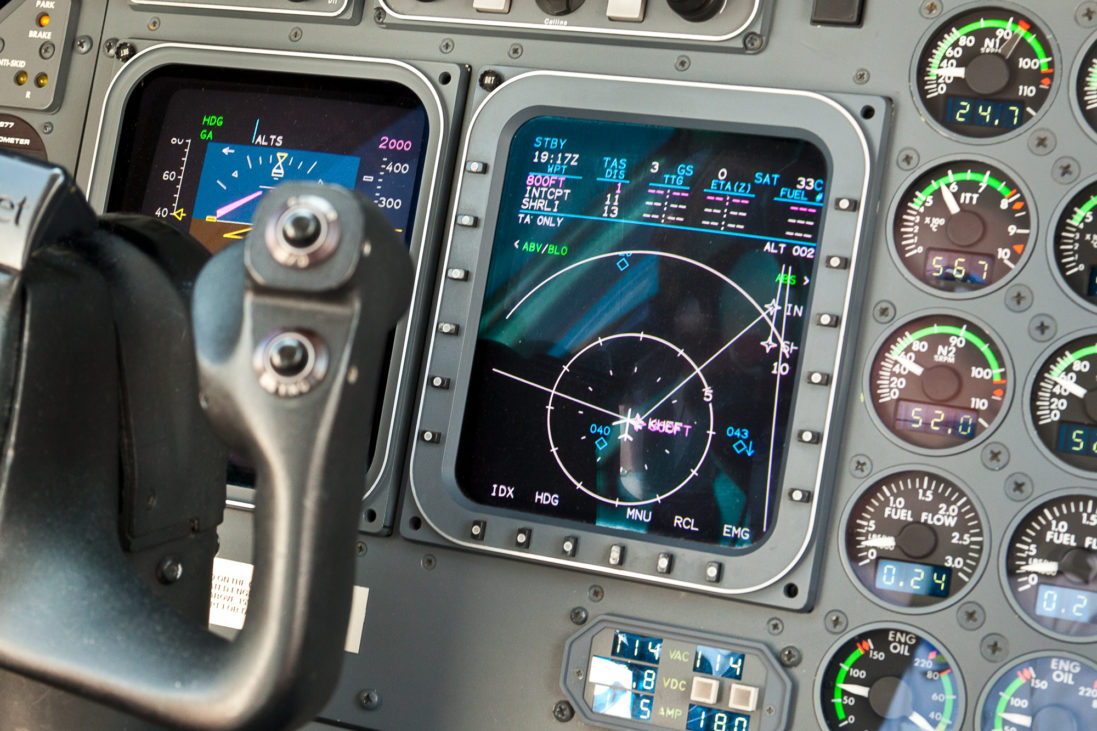
Receiver Autonomous Integrity Monitor (RAIM)
Receiver Autonomous Integrity Monitor (RAIM) is a form of integrity monitoring performed within the avionics themselves. It ensures available satellite signals meet the integrity requirements for a given phase of flight. By comparing the distance measurements of a number of satellites, the RAIM function can identify a satellite failure and issue an alert to the pilot. Without RAIM capability, the pilot has no assurance of the accuracy of the GPS position. A minimum of five satellites is required to detect a bad satellite; at least six satellites are required to detect and exclude a bad satellite from the navigation solution if your receiver has a fault detection and exclusion (FDE) RAIM algorithm. The GPS receiver should also tell you when its RAIM function is unavailable, at both present time/position and at any selected future time/position. You can get information on satellite outages through the NOTAM system, however the effect of an outage on the intended operation cannot be determined unless the pilot has a RAIM availability prediction program which allows excluding a satellite which is predicted to be out of service.
If you are using GPS to fly an approach and you receive a RAIM annunciation prior to the final approach waypoint, you may not have sufficient accuracy to complete the approach.
You can get information on satellite outages through the NOTAM system, however the effect of an outage on the intended operation cannot be determined unless the pilot has a RAIM availability prediction program which allows excluding a satellite which is predicted to be out of service.
View the FAA Receiver Autonomous Integrity Monitoring (RAIM) Prediction web site
Satellite Based Augmentation System (SBAS)
The Satellite Based Augmentation System (SBAS) is an augment to the Global Positioning System (GPS) to enhance the accuracy and reliability of position estimates. The U.S. version of the Satellite Based Augmentation System (SBAS) has traditionally been referred to as the Wide Area Augmentation System. WAAS covers nearly all of the U.S. National Airspace System (NAS). Correction messages are broadcast by geostationary communication satellites. WAAS allows GPS to be used as a primary means of navigation from takeoff through Category I precision approach. The WAAS broadcast message improves GPS signal accuracy from 100 meters to approximately 7 meters.
View FAA information on the Satellite Based Augmentation System
Ground Based Augmentation System (GBAS)
The Ground Based Augmentation System (GBAS) is an augment the Global Positioning System (GPS) to improve aircraft safety during airport approaches and landings. The U.S. version of the Ground Based Augmentation System (GBAS) has traditionally been referred to as the Local Area Augmentation System (LAAS). The worldwide community has adopted GBAS as the official term for this type of navigation system. To coincide with international terminology, the FAA is also adopting the term GBAS to be consistent with the international community. GBAS is a ground-based augmentation to GPS that focuses its service on the airport area (approximately a 20-30 mile radius) for precision approach, departure procedures, and terminal area operations. It broadcasts its correction message via a very high frequency (VHF) radio data link from a ground-based transmitter. GBAS will yield the extremely high accuracy, availability, and integrity necessary for Category I, II, and III precision approaches, and will provide the ability for flexible, curved approach paths. GBAS demonstrated accuracy is less than one meter in both the horizontal and vertical axis.
View FAA information on the Ground Based Augmentation System


 International Business Aviation Council Ltd.
International Business Aviation Council Ltd.